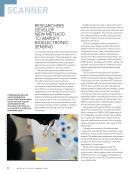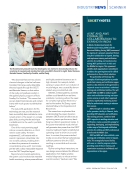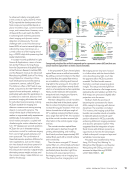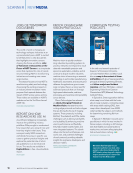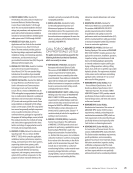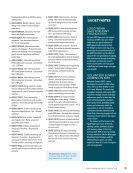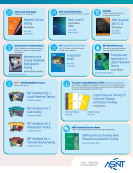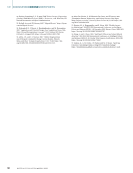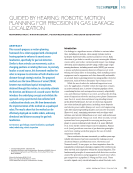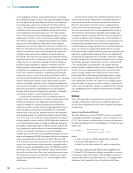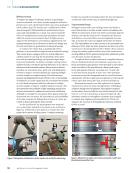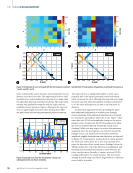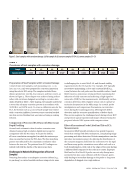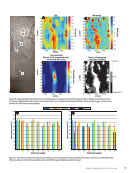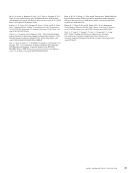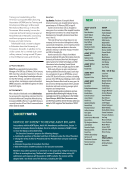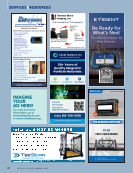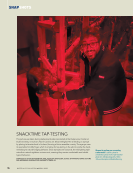Munoz, N. E., and D. T. Blumstein. 2020. “Optimal Multisensory Integra-
tion” (ed. L. Simmons). Behavioral Ecology 31 (1): 184–93. https://doi
.org/10.1093/beheco/arz175.
Populin, L. C., and T. C. T. Yin. 1998. “Pinna Movements of the Cat during
Sound Localization.” Journal of Neuroscience: The Official Journal of the
Society for Neuroscience 18 (11): 4233–43. https://doi.org/10.1523/
JNEUROSCI.18-11-04233.1998.
Purohit, H., R. Tanabe, T. Ichige, T. Endo, Y. Nikaido, K. Suefusa, and Y.
Kawaguchi. 2019. “MIMII Dataset: Sound Dataset for Malfunctioning
Industrial Machine Investigation and Inspection.” Proceedings of the
Detection and Classification of Acoustic Scenes and Events 2019 Workshop
(DCASE 2019): 209-213. https://doi.org/10.33682/m76f-d618.
Rascon, C., and I. Meza. 2017. “Localization of Sound Sources in Robotics:
A Review.” Robotics and Autonomous Systems 96:184–210. https://doi.
org/10.1016/j.robot.2017.07.011.
Ruhland, J. L., A. E. Jones, and T. C. T. Yin. 2015. “Dynamic Sound Local-
ization in Cats.” Journal of Neurophysiology 114 (2): 958–68. https://doi.
org/10.1152/jn.00105.2015.
Schenck, A., W. Daems, and J. Steckel. 2019. “AirleakSlam: Detec-
tion of Pressurized Air Leaks Using Passive Ultrasonic Sensors.”
2019 IEEE SENSORS: 1–4. Montreal: IEEE. https://doi.org/10.1109/
SENSORS43011.2019.8956631.
Thewissen, J. G. M. H., and S. Nummela. 2008. Sensory Evolution on the
Threshold: Adaptations in Secondarily Aquatic Vertebrates. Univ. of Cali-
fornia Press.
Wang, F., W. Lin, Z. Liu, S. Wu, and X. Qiu. 2017. “Pipeline Leak Detection
by Using Time-Domain Statistical Features.” IEEE Sensors Journal 17 (19):
6431–42. https://doi.org/10.1109/JSEN.2017.2740220.
Wang, S., and X. Yao. 2020. “Aeroacoustics Measurement of the Gas
Leakage Rate for Single Hole.” Review of Scientific Instruments 91 (4):
045102. https://doi.org/10.1063/1.5132999.
Wang, X., T. Luo, and Y. Lei. 2022. “Inspection Robot Design for Under-
water Structure in Complex Flow Environment.” 2022 International
Conference on Service Robots (ICoSR): 193–197. https://doi.org/10.1109/
ICoSR57188.2022.00043.
Yamamoto, S. 1992. “Development of Inspection Robot for Nuclear
Power Plant.” Proceedings of the 1992 IEEE International Conference
on Robotics and Automation (Vol. 2): 1559–60. https://doi.org/10.1109/
ROBOT.1992.220030.
Yan, Y., Y. Shen, X. Cui, and Y. Hu. 2018. “Localization of Multiple Leak
Sources Using Acoustic Emission Sensors Based on MUSIC Algorithm and
Wavelet Packet Analysis.” IEEE Sensors Journal 18 (23): 9812–20. https://doi.
org/10.1109/JSEN.2018.2871720.
Ye, W., B. Zhou, Z. Tu, X. Xiao, J. Yan, T. Wu, F. Wu, C. Zheng, and F. K.
Tittel. 2020. “Leakage Source Location Based on Gaussian Plume Diffusion
Model Using a Near-Infrared Sensor.” Infrared Physics &Technology 109:
103411. https://doi.org/10.1016/j.infrared.2020.103411.
Young, E. D., J. J. Rice, and S. C. Tong. 1996. “Effects of Pinna Position on
Head-Related Transfer Functions in the Cat.” Journal of the Acoustical
Society of America 99 (5): 3064–76. https://doi.org/10.1121/1.414883.
Zhang, X. 2022. “VideoGasNet: Deep Learning for Natural Gas Methane
Leak Classification Using an Infrared Camera.” Energy 238 (Part B): 121516.
https://doi.org/10.1016/j.energy.2021.121516.
Zhao, M., T. Huang, C. Liu, M. Chen, S. Ji, D. M. Christopher, and X. Li.
2021. “Leak Localization Using Distributed Sensors and Machine Learning
for Hydrogen Releases from a Fuel Cell Vehicle in a Parking Garage.”
International Journal of Hydrogen Energy 46 (1): 1420–1433. https://doi.
org/10.1016/j.ijhydene.2020.09.218.
Zheng, X., Q. Wang, S. Xue, and C. Zheng. 2021. “A Beamforming-Based
Joint Estimation Method for Gas Pipeline Leak Localization.” Measurement
177: 109264. https://doi.org/10.1016/j.measurement.2021.109264.
A P R I L 2 0 2 5 • M AT E R I A L S E V A L U AT I O N 61
tion” (ed. L. Simmons). Behavioral Ecology 31 (1): 184–93. https://doi
.org/10.1093/beheco/arz175.
Populin, L. C., and T. C. T. Yin. 1998. “Pinna Movements of the Cat during
Sound Localization.” Journal of Neuroscience: The Official Journal of the
Society for Neuroscience 18 (11): 4233–43. https://doi.org/10.1523/
JNEUROSCI.18-11-04233.1998.
Purohit, H., R. Tanabe, T. Ichige, T. Endo, Y. Nikaido, K. Suefusa, and Y.
Kawaguchi. 2019. “MIMII Dataset: Sound Dataset for Malfunctioning
Industrial Machine Investigation and Inspection.” Proceedings of the
Detection and Classification of Acoustic Scenes and Events 2019 Workshop
(DCASE 2019): 209-213. https://doi.org/10.33682/m76f-d618.
Rascon, C., and I. Meza. 2017. “Localization of Sound Sources in Robotics:
A Review.” Robotics and Autonomous Systems 96:184–210. https://doi.
org/10.1016/j.robot.2017.07.011.
Ruhland, J. L., A. E. Jones, and T. C. T. Yin. 2015. “Dynamic Sound Local-
ization in Cats.” Journal of Neurophysiology 114 (2): 958–68. https://doi.
org/10.1152/jn.00105.2015.
Schenck, A., W. Daems, and J. Steckel. 2019. “AirleakSlam: Detec-
tion of Pressurized Air Leaks Using Passive Ultrasonic Sensors.”
2019 IEEE SENSORS: 1–4. Montreal: IEEE. https://doi.org/10.1109/
SENSORS43011.2019.8956631.
Thewissen, J. G. M. H., and S. Nummela. 2008. Sensory Evolution on the
Threshold: Adaptations in Secondarily Aquatic Vertebrates. Univ. of Cali-
fornia Press.
Wang, F., W. Lin, Z. Liu, S. Wu, and X. Qiu. 2017. “Pipeline Leak Detection
by Using Time-Domain Statistical Features.” IEEE Sensors Journal 17 (19):
6431–42. https://doi.org/10.1109/JSEN.2017.2740220.
Wang, S., and X. Yao. 2020. “Aeroacoustics Measurement of the Gas
Leakage Rate for Single Hole.” Review of Scientific Instruments 91 (4):
045102. https://doi.org/10.1063/1.5132999.
Wang, X., T. Luo, and Y. Lei. 2022. “Inspection Robot Design for Under-
water Structure in Complex Flow Environment.” 2022 International
Conference on Service Robots (ICoSR): 193–197. https://doi.org/10.1109/
ICoSR57188.2022.00043.
Yamamoto, S. 1992. “Development of Inspection Robot for Nuclear
Power Plant.” Proceedings of the 1992 IEEE International Conference
on Robotics and Automation (Vol. 2): 1559–60. https://doi.org/10.1109/
ROBOT.1992.220030.
Yan, Y., Y. Shen, X. Cui, and Y. Hu. 2018. “Localization of Multiple Leak
Sources Using Acoustic Emission Sensors Based on MUSIC Algorithm and
Wavelet Packet Analysis.” IEEE Sensors Journal 18 (23): 9812–20. https://doi.
org/10.1109/JSEN.2018.2871720.
Ye, W., B. Zhou, Z. Tu, X. Xiao, J. Yan, T. Wu, F. Wu, C. Zheng, and F. K.
Tittel. 2020. “Leakage Source Location Based on Gaussian Plume Diffusion
Model Using a Near-Infrared Sensor.” Infrared Physics &Technology 109:
103411. https://doi.org/10.1016/j.infrared.2020.103411.
Young, E. D., J. J. Rice, and S. C. Tong. 1996. “Effects of Pinna Position on
Head-Related Transfer Functions in the Cat.” Journal of the Acoustical
Society of America 99 (5): 3064–76. https://doi.org/10.1121/1.414883.
Zhang, X. 2022. “VideoGasNet: Deep Learning for Natural Gas Methane
Leak Classification Using an Infrared Camera.” Energy 238 (Part B): 121516.
https://doi.org/10.1016/j.energy.2021.121516.
Zhao, M., T. Huang, C. Liu, M. Chen, S. Ji, D. M. Christopher, and X. Li.
2021. “Leak Localization Using Distributed Sensors and Machine Learning
for Hydrogen Releases from a Fuel Cell Vehicle in a Parking Garage.”
International Journal of Hydrogen Energy 46 (1): 1420–1433. https://doi.
org/10.1016/j.ijhydene.2020.09.218.
Zheng, X., Q. Wang, S. Xue, and C. Zheng. 2021. “A Beamforming-Based
Joint Estimation Method for Gas Pipeline Leak Localization.” Measurement
177: 109264. https://doi.org/10.1016/j.measurement.2021.109264.
A P R I L 2 0 2 5 • M AT E R I A L S E V A L U AT I O N 61











